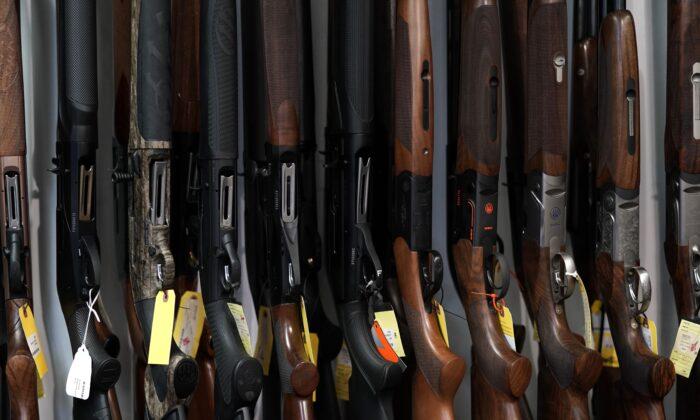People interested in buying certain semiautomatic firearms could be priced out of the market under a proposal supported by more than two dozen House Democrats.
Twenty-four other Democrat lawmakers are co-sponsors, although Mr. Beyer has yet to submit language for the bill.
2022 Bill
Mr. Beyer’s 2022 proposal defined “large capacity ammunition feeding devices” as those made for or capable of being modified to hold more than 10 rounds of ammunition. “Assault weapons” included semiautomatic rifles with an adjustable stock, pistol grip, forward grip, threaded barrel, or functional grenade launcher that’s also capable of accepting a detachable magazine or a semiautomatic rifle with a fixed magazine capable of holding more than 10 rounds of ammunition.That language would encompass widely owned semiautomatic rifles such as the AR-15.
A semiautomatic pistol that can accept a detachable magazine and has a threaded barrel, barrel shroud, second pistol grip, the ability to accept a magazine at any point other than the pistol grip, that weighs more than 50 ounces, or includes a stabilizing brace or protruding buffer tube was also considered an “assault weapon” under the 2022 bill, as is a pistol with a fixed-magazine with a capacity greater than 10 rounds.
A semiautomatic shotgun with a fixed magazine capacity greater than five rounds or the ability to accept a detachable magazine that also has a grip or adjustable stock is also deemed an “assault weapon” in the 2022 measure.
Mr. Beyer offered the 2022 “Assault Weapons Excise Act” as a means of circumventing Republican opposition to outright bans on weapons such as the kind described in his proposal.
“I have voted in the past for commonsense gun safety reforms, only to see them run aground on Senate Republicans’ filibuster; my bill presents a pathway to bypass that obstruction and enact lifesaving measures,” he said at the time.
While Democrats held a majority in the House, Mr. Beyer’s 2022 bill never made it past the introductory stage. The new attempt to impose a prohibitive excise tax could face even longer odds since Republicans now hold a majority in the House.
Gun Rights Activists Decry Excise Tax Plans
Mr. Beyer isn’t the only lawmaker to propose raising excise taxes on gun and ammunition purchases. State lawmakers have proposed similar ideas in California and Connecticut.In 2019, New Jersey Gov. Phil Murphy, a Democrat, also called for imposing an excise tax on gun and ammunition purchases, while also increasing licensing fees. Mr. Murphy’s call for a 2.5 percent excise on gun purchases was met with criticism from the National Rifle Association (NRA).
After Mr. Beyer introduced his 2022 bill, the National Association for Gun Rights (NAGR) raised similar concerns about everyday citizens being priced out of the self-defense market.





